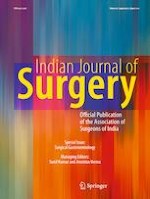Erschienen in:

04.01.2020 | Original Article
Benign Bile Duct Strictures
verfasst von:
Sanjay De Bakshi
Erschienen in:
Indian Journal of Surgery
|
Sonderheft 3/2021
Einloggen, um Zugang zu erhalten
Abstract
Bile duct strictures can prove to be an extremely difficult diagnostic problem. The majority of Benign bile duct strictures (80%) are unfortunately iatrogenic, the injury occurring after a routine laparoscopic (incidence 0.4-0.6%) or open (incidence 0.2-0.3%) cholecystectomy. The existence of a number of anatomical variations add to the incidence of biliary injury either in isolation or with associated vascular injury. There are also a number of other causes of both iatrogenic and non-iatrogenic causes of benign bile duct strictures. Improved imaging modalities have aided the recognition of the anatomical extent of the stricture and in planning the treatment. Classification of bile duct injury was described by Bismuth in 1982, further modifications were described by Strasberg in 1995. Associated vascular injuries were classified both by Stewart-Way and Bektas et al in the Hannover Classification in 2007. Treatment of biliary stricture depends on the time of diagnosis and type of final injury. While surgery provides the mainstay of treatment, certain select conditions may lend themselves to endoscopic therapy and interventional therapy.